Introduction
In the actual world, the communication has become as fundamental in the life as
water. This importance can be reflected in all the aspects of our lives: social,
work, studies, etc. The communication is an inevitable process of the human
being. Without communication, there would not be a human society. It is not the
exception in the education. A good learning of the oral expression in a foreign
language has become the key of the process.
The aim of this project is to improve the oral expression in the tenth grade, of
the Province of Imbabura High School. This improvement will be achieved by
applying motivational activities in classes. Students are afraid of talking in
front of the class, because not only they do not know how to say something in
English, but also due to the insufficiency of motivation, they have.
The communication is essential for the development of the human being and in the
case of education is not an exception. Students need to learn a foreign language
in order to have bigger opportunities in the future. The first way to
communicate is orally. The speaking is the most important and basic way to
communicate. That importance lets the authors of this investigation, focus in
the speaking skill.
There are many reasons this process can be broken; for example, a bad
pronunciation, a low acquisition of vocabulary, or a deficiency of motivation in
order to talk. Researchers have developed the speaking skill from different
points of view; it was found that, the motivational activities have not
developed at all. This is the reason the authors considered the motivational
activities as topic.
The motivational activities have an important role in the development of the
speaking skill that has not been reinforce enough. According to the authors if
the students do not feel motivated or encouraged to talk in class, they will
never practice or lose the fear to talk. The motivation lets the classes to be
more dynamic, fun and relaxed; and if the classes have these characteristics,
students will learn quicker and easier.
The problem was primary found in the Province de Imbabura, high school;
specifically, in the tenth grade. In order to develop the motivational
activities as topic, different steps were followed (prior appraisal process), as
it stated in Barroso, Calero y Sánchez (2015) and Barroso, Sánchez, Calero,
Recalde, Montero & Delgado (2015). First, was stated the general objective,
then, it was made a bibliographical research in order to find the foundations
and importance of this topic. After that, it was made a statistical and field
analysis, in order to find the reality of the education. Finally, it was
embedded a solution to the problem, that was the designing of motivational
activities to develop the speaking skill. All this process will be explained in
this article.
The objective of the paper is determine the influence of the motivational
activities in the development of the oral expression, through a bibliographic
review, statistical analysis and a field study, to design a didactic guide for
the development of the oral expression.
Development
The fundamental grounds of this topic were developed from different point of
view. Epistemological, psychological, pedagogical and legal. Thanks to all these
foundations, it was possible to show the importance and relevance of this topic.
Historically humans always have the possibility to express themselves orally.
This communication shows that it is one of the most important and useful
capabilities for coexistence in a man society.
A big amount of the world’s population wants to increase their proficiency in
oral expression when they study English but the ability to learn how to speak a
new language is more complex than it seems because we have to be aware not only
of the context where we are, but also of the people who we are talking to.
Richards and Renandya said in his book Methodology in Language Teaching: An
Anthology of Current Practice (2002): “When we use casual conversation, for
example, our purposes may be to make social contact with people, to establish
rapport, or to engage in the harmless chitchat that occupies much of the time we
spend with friends.” (p. 201)
All these authors agree with the researchers about the importance of the oral
expression. The communication is the key for the human survival. Without
language, there would not be society or human beings. In order to have a good
communication process in a casual situation it is necessary to be relaxed and
comfortable with the language spoken.
It is harder to make students relaxed and comfortable through speaking English.
Normally, when a foreign language is learned it is built a barrier of fear and
apprehension around the language. This barrier appears from different reasons:
fear to make mistakes, activities too focused in grammar, strict rules or strict
teachers. This investigation is looking forward to breaking these barriers and
make easier to talk in classes.
These barriers will come down through the correct motivation towards the
students. Woolfolk, Hughes and Walk (2012) defined motivation as: “an internal
state that arises, directs, and maintains behavior” (p. 372). The motivation
can make learners to respond as expected to stimuli applied in the classroom,
and maintain a controlled working environment.
Motivation is an important factor in the learning process of learners, when
learners are motivated, they can perform tasks without any problem, but when
they are not; therefore, they will be slower, and they will not learn anything
(Rehman & Haider, 2013; Cardenas, Zamora y Calero, 2016).
According to Brawer (1982), motivational activities can pick up the enthusiasm
of the learner and do a relevant job to the learner. He mentioned four basic
steps to lead the teacher to select appropriate motivational activities:
The first step is to determine the media needs of the learners (e.g., lower
ability groups generally respond better to visual stimuli such as films,
overheads, or displays). The second component of the model is derived from
examining the prior decisions and entails such decisions, as whether the
motivational activity should focus on related past instruction, or whether
remedial activities are needed. A next step is to examine the feasibility of
that activity within the learning environment (i.e., the time and materials
available), and the final step is to develop/select the actual motivational
events of instruction. It is suggested that by examining the problem of
motivation, identifying student characteristics, and carefully planning
lessons, many of the motivational problems teachers face in the classroom can
be overcome. A flowchart illustrating the steps in selecting motivational
activities for instruction is appended. (Brawer, 1982, p. 45)
Motivational activities are made more often in peers or small groups. This helps
to break the fear to the teacher. Between the students, there is more
confidence, so they will be more open to talk, because it will not matter if
they make mistakes.
According to the theory of the zone of proximal development that is “the
distance between the actual developmental level as determined by independent
problem solving and the level of potential development as determined through
problem solving under adult guidance, or in collaboration with more capable
peers" (Vygotski, 1978, p. 86)
This theory works by the idea that it is better to build a new knowledge based
form a previous knowledge through the help of a guide or more capable partner.
The motivational activities are made in groups. For each group it is stablished
a leader. This leader has a higher level, and he or she can correct and work
with the others members of the group.
All these authors reinforce the idea of the investigators that the motivational
activities most is developed in order to better up the speaking skill. The
application of motivational activities will solve the problem found in the
students from tenth grade from Province of Imbabura High School.
Methodological
design
This Project has a methodological attention in both quantitative and qualitative
approach. The qualitative is expressed in the process of scientific
understanding it moved through the logic of research from the theoretical
support of the variables studied, until the interpretative processes, and the
quantitative data obtained from tabulations of the survey and interviews.
Theoretical
methods
-
Analysis-synthesis:
It is used to break our object of study to meet further with their
constituents and the total representation and parts thereof. This method
also travels throughout the logic of research.
-
Inductive-Deductive:
It allows the investigation start with the particular fact unique in a given
context to arrive after a scientific generalization.
-
Historical
and logical: It provides a natural connection with the history of the object
studied.
-
Structural
- systemic functional approach: It is used for modeling tutorial in this
research proposal, studies the logic of the parts separately and the
interrelationship and interaction of the same, allowing us to identify the
purpose of this whole system. It is the one that presents the whole system
definitely, it is the tutorial with motivational activities for development
of oral expression showing the integrative relationship between parts, which
provide consistency between their structure and functions of the system to
be represented in their reality.
Empirical
methods
The authors made use of empirical instruments beginning with the Observation:
Which allows to detect and assimilate the information found in the selected
context for a record of certain facts through a physical document as the
observation guide This observation has a structured type that reveals the most
relevant aspects of the investigation.
-
Survey:
It was applied to deepen through the diagnosis of the problems in the oral
expression it was applied to students. It searches for the causes.
-
Interview:
It allowed a meeting with the English teachers to collect data from their
opinions based on their experiences on the problems of oral expression and
get answers on the questions raised.
Mathematical
statistical method
-
Mathematical-Statistical
Analysis: Through this method was possible to collect statistical
information, which can be observed in tables and graphs that allowed
highlighting the difficulties and strengths found in each evaluated criteria
-
Chic
Square: It was used to prove the relation between the two variables studied.
In order to find the reality of the education and to show the relevance of the
topic, it was applied different investigation instruments. Those instruments
were: a survey, an interview and an observation guide. The result of each
instrument will be explained in the next paragraphs.
The analysis of the survey showed that students have a low level in the oral
expression. This deficiency is caused by the insufficient application of
motivational activities. In addition, they said, that they agree with the
implementation of the motivational activities in classes. It showed that
students are afraid of talking in classes, and the classes are often boring and
not interesting.
Besides, through the survey was possible to determine that students are
interested in learning a foreign language in a funny and didactical way. One of
the questions was if they consider important to use motivational activities in
classes. The result was that 70% of the students strongly agreed with the
statement. It shows how important it is for the students.
Teachers also agree with the same idea. In the interview, the teacher said that
it is important to develop the oral expression, more specifically motivational
activities. The oral expression is one of the most relevant skill; in classes,
it is improved through the communicative approach. Sadly, the teacher does not
have the appropriate material about motivational activities.
According to the interview, the teacher considers that when students work
in groups they can help each other. Besides, she agrees with the fact that group
activities help to lose the fear to talk in class and make students more
comfortable. Finally, the teacher was glad to be part of this investigation; and
said that she would like to have a copy of the activities that this project will
present.
Results
For these reasons, the didactic guide is needed and directed to those teachers
willing to use motivational activities as an aid to warm up their classes in
oral expression. A way to motivate teachers in the use of suitable activities
for their classes, to increase their creativity to adjust those activities in
the best way they think, so that the students will show an active participation.
This didactic guide is designed for basic, intermediate, and advanced levels in
English, the three activities given, offer different scenarios for the students
specifically related to have fun; they can be chosen and adapted by the teacher
depending on the course, the ages, and the amount of students in the class.
One of the activities promotes a self-work and the others just give the teacher
the chance to evaluate and promote an integral and cooperative development. It
is important to mention the possibilities to learn through funny activities to
get students interest in a different language.
Welcome
section
Topic
Nº 1: The greetings
Objective:
To greet one another in different ways.
Resources:
Worksheets
Activity:
Matching, unscramble, and an oral activity
To
introduce the class:
Motivational
activity:
Oral
activity:
-
The
teacher explains students the formal and informal greetings.
-
The
teacher asks students to work in pairs.
-
The
teacher says a moment in a day.
-
Students
have to greet a classmate using the greetings.
-
Students
have to swap roles or repeat the activity with another classmate.
Topic
Nº 2: Introduce yourself and people
Objective:
To meet new people and get to know one another
Resources:
Worksheets
Activity:
Complete sentences, and an oral activity
To
introduce the class:
Motivational
activity:
Oral
activity:
-
The
teacher explains students they are going to do a role play.
-
The
teacher asks students to work in pairs.
-
The
teacher tells them to use the dialog in the Worksheet No. 5 as an example.
-
Students
have to choose a partner to introduce in front of the class using as example
the completed dialogue above.
-
Students
have to swap roles or repeat the activity with another classmate.
Topic
Nº 3: Classroom commands
Objective:
To understand and respond to orders in class.
Resources:
Worksheets
Activity:
Matching and an oral activity
To
introduce the class:
Motivational
activity:
Oral
activity:
-
The
teacher explains students the classroom commands.
-
The
teacher asks students to work in pairs.
-
The
teacher asks students to act out the classroom commands using the Worksheet
No. 8.
-
Students
have to act out the classroom commands.
-
Students
have to swap roles or repeat the activity with another classmate.
Unit
1: People
Topic
Nº 1: The family
Objective:
To communicate personal information using the members of the family.
Resources:
Worksheets
Activity:
Word search and an oral activity.
To
introduce the class:
Motivational
activity:
Oral
activity:
-
The
teacher asks students to work in pairs.
-
The
teacher tells students they are going to talk about a family member.
-
The
teacher must include the questions needed.
-
The
teacher encourages students to use the new vocabulary.
-
Students
have to team up with a classmate.
-
Students
have to tell their peers to talk about one family member.
-
Students
have to swap roles or repeat the activity with another classmate.
Topic
Nº 2: The professions
Objective:
To talk about different jobs people or family does.
Resources:
Worksheets
Activity:
Labeling, unscramble, and an oral activity
To
introduce the class:
Motivational
activity:
Oral
activity:
-
The
teacher asks students to work in pairs.
-
The
teacher tells students they are going to talk about their parents’ or any
family member’s job.
-
The
teacher must include the questions needed.
-
The
teacher encourages students to use the new vocabulary.
-
Students
have to team up with a classmate.
-
Students
have to tell their peers to talk about their parents’ or any family member’s
job.
-
Students
have to swap roles or repeat the activity with another classmate.
Unit
2: Food
Topic
Nº 1: Vegetables
Objective:
To socialize different types of vegetables they like and dislike.
Resources:
Worksheets
Activity:
Crossword puzzle, word search, and an oral activity
To
introduce the class:
Motivational
activity:
Oral
activity:
-
The
teacher gives students the Worksheet No. 17 and asks them to cut the
memory cards off.
-
The
teacher asks students to work in pairs.
-
The
teacher tells students to face down the cards on the table; then turn it
over to collect the matching pairs. If the student get a matching pair
asks students to make a sentence, using “I like…/ I dislike…”
structure.
-
Students
have to cut the pictures, put them face down on the table, and turn them
over to collect the matching pairs.
-
Students
have to get a pair of the cards and to make a sentence.
-
Students
have to swap roles or repeat the activity with another classmate.
Topic
Nº 2: Fruits
Objective:
To talk about different kinds of fruits they have every season.
Resources:
Worksheets
Activity:
Crossword puzzle, word search, and an oral activity
To
introduce the class:
Motivational
activity:
Oral
activity:
-
The
teacher asks students to work in pairs.
-
Teacher
explains students they are going to talk about the fruits they have when the
seasons change.
-
The
teacher must include information about it. i.e.: “In
winter we had mangos.”
-
The
teacher asks students to make a list of the different fruits according the
seasons.
-
Students
have to make a list of the different fruits according the seasons.
-
Students
have to say which fruits they have when the season changes.
-
Students
have to swap roles or repeat the activity with another classmate.
Topic
Nº 3: Meals
Objective:
To express the meals they have every day.
Resources:
Worksheets
Activity:
Crossword puzzle, word search, and an oral activity
To
introduce the class:
Motivational
activity:
Oral
activity:
-
The
teacher tells students they are going to talk about their favorite meal of
the day.
-
The
teacher asks students to make a list of the ingredients of the food they
like most.
-
The
teacher tells students to make teams of five that share the same meal in
order to students talk about why they like it and how they prepare it.
-
Students
have to make a list of the ingredients of the food they like most.
-
Students
have to make teams with who share the same meal.
-
Students
have to share information about how they prepared the meal and why do they
like it.
Unit
3: Places
Topic
Nº 1: At home
Objective:
To talk about different parts of their houses.
Resources:
Worksheets
Activity:
Labeling and an oral activity
To
introduce the class:
Motivational
activity:
Oral
activity:
-
The
teacher divides students into Student A and Student B.
-
The
teacher gives Student A the Worksheet No. 25 and Student B the Worksheet
Nº 26.
-
Teacher
tells students to look for a partner with the different worksheet to
theirs.
-
Student
has to A have to tell different objects form one room of the house.
-
Student
B has to guess what part of the house his/her peer is talking about then
cut it and paste in order to complete the house.
-
Students
have to swap roles or repeat the activity with another classmate.
Topic
Nº 2: At school
Objective:
To talk about how you feel at school.
Resources:
Worksheets
Activity:
Matching, labeling, and an oral activity
To
introduce the class:
Motivational
activity:
Oral
activity:
-
The
teacher divides students into Student A and Student B.
-
The
teacher explains students that Student A is going to ask questions and
Student B is going to answer those questions.
-
The
teacher encourages students to use adjectives to describe strong feelings
i.e. I feel excited in my gym class.
-
The
teacher must give students more examples if needed.
-
Student
has to take turns to ask and answer questions about how they feel in each
part of the school.
-
Students
have to use adjectives to describe strong feelings about how they feel in
the school.
-
Students
have to to swap roles or repeat the activity with another classmate.
Topic
Nº 3: In the city
Objective:
To mention things they can find in the city.
Resources:
Worksheets
Activity:
Matching, word search, labeling, and an oral activity
To
introduce the class:
Motivational
activity:
-
The
teacher must give students Worksheet No. 31, Worksheet No. 32, and Worksheet
No. 33 that aims students to feel motivated and also provides them the
useful vocabulary they will need prior to develop the oral activity.
Oral
activity:
-
The
teacher divides students into Student A and Student B.
-
The
teacher explains students that Student A is going to ask questions and
Student B is going to answer those questions about the things and places you
can find in the city.
-
The
teacher asks students to use the structure “Is there a …? / Are there
any…? / Where is the …?” To make questions about the things they
can find in the city.
-
Student
has to take turns to ask and answer questions about the things they can find
in the city using the structure “Is
there a …? / Are there any…? / Where is the …?”
-
Students
have to swap roles or repeat the activity with another classmate
Worksheet
Nº 1
The
greetings: Introduction to the topic
Formal
greetings: arriving

Informal
greetings: arriving
Responds
Worksheet
Nº 2
The
greetings: Introduction to the topic
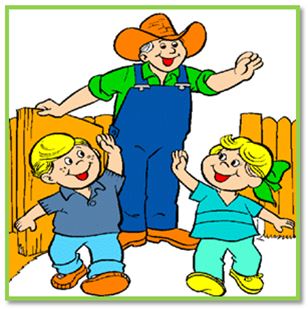
Formal
greetings: departing
Informal
greetings: departing
-
Goodbye
-
Bye
bye
-
Bye
-
See
you later
-
See
you soon
-
See
you tomorrow
-
See
you on Monday
-
Later
(very informal)
Worksheet
Nº 3
The
greetings: Motivational Activity
1.
Match the words
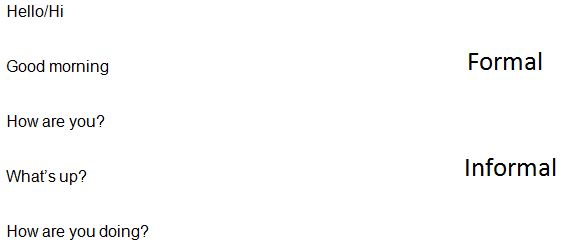
2.
Unscramble the words to make sentences.
a.
Ana/ are/ how/ you/ ?/ Hello
_____________________________________
b.
what’s/ David/ up/ ? / Hi
_____________________________________
c.
Mr. Brown/ morning/ Good
_____________________________________
d.
Thank./ I’m/ you/ fine.
____________________________________
e.
Good./ John/ you/ later/ bye/ see
____________________________________
Worksheet
Nº 4
Introduce
yourself and people: Introduction to the topic
We have three simple ways to introduce ourselves to people:
-
Hello!,
my name is John. (formal)
-
Hi!,
I'm John. (formal)
-
Hi!,
they call me John. (informal)
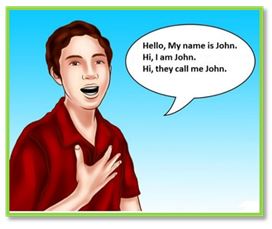
To
introduce someone to another person we use This is before the
name.
This
is _________.
A:
Mr. Salas, This is Monica.
B:
Nice to meet you, Monica. How are you?
C:
Nice to meet you, too. Fine, thanks.

Worksheet
Nº 5
Introducing
yourself and people: Motivational activity
1.
Complete the three ways Damian can use to introduce himself.
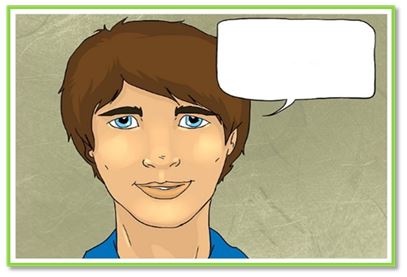
2.
Complete the conversation introducing a friend named
Peter to his dad.
A:
Dad, __________________Peter.
B:
______________________Peter, How are you?
C:
_____________, __________.
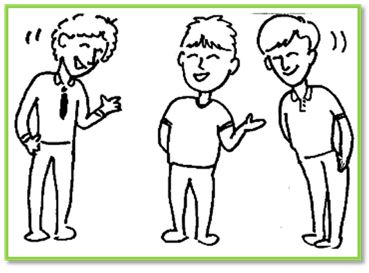
Worksheet
Nº 6
Classroom
commands: Introduction to the topic
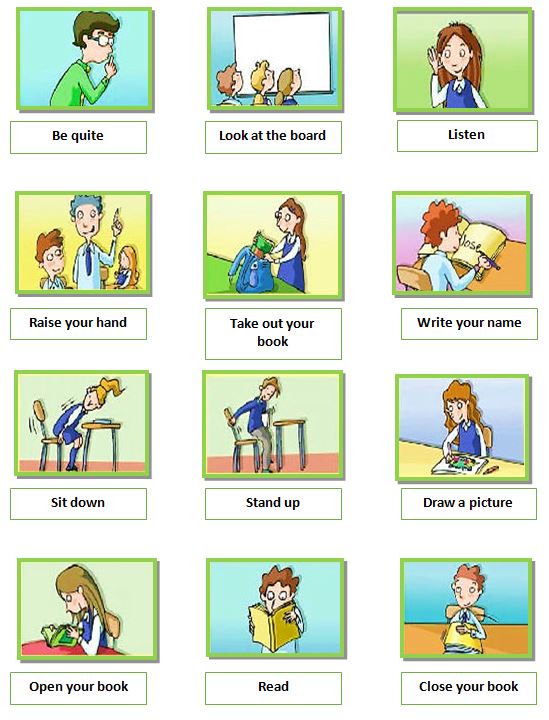
Worksheet
Nº 7
Classroom
commands: Motivational Activity
1.
Match the words to the picture using the numbers.
Worksheet
Nº 8
Classroom
commands: Oral Activity
Oral
Activity:
In
pairs: Using the examples below, you will act out the classroom commands
with another partner in front of the class.
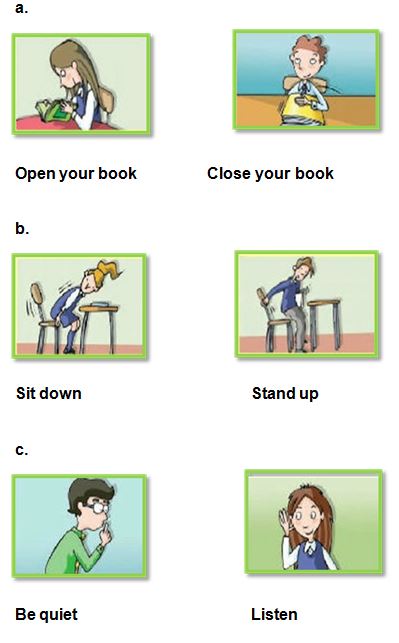
Worksheet
Nº 9
The
Family: Introduction to the topic
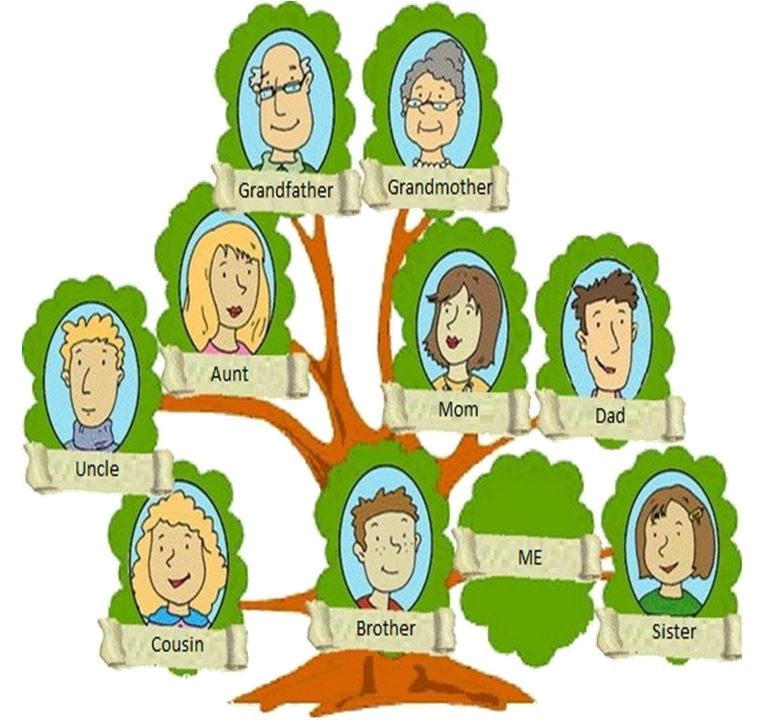
Worksheet
Nº 10
The
Family: Motivational Activity
1.
Word search: Look up the words in the box.
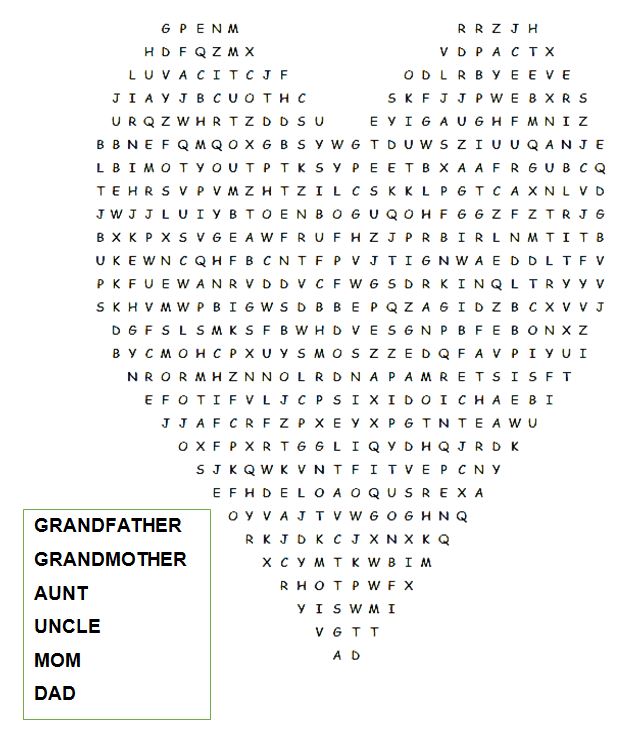
Worksheet
Nº 11
The
Professions: Introduction to the topic
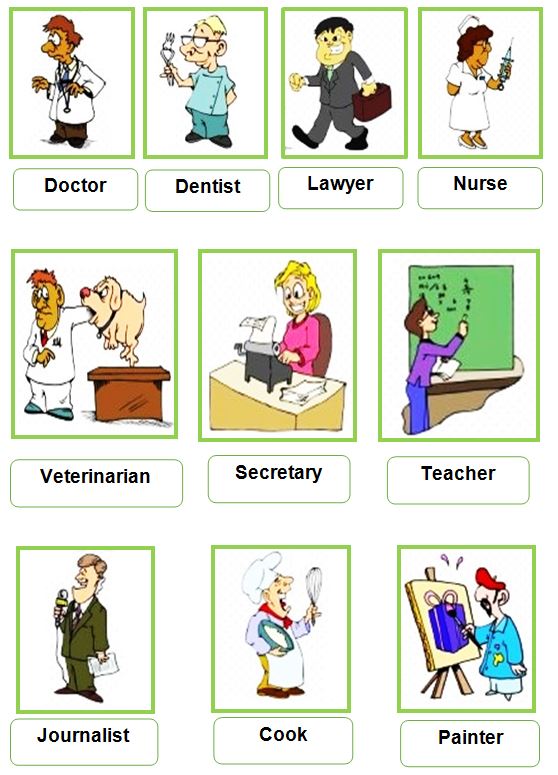
Worksheet
Nº 12
The
Professions: Motivational Activity
1.
Match the words with the pictures using the numbers.
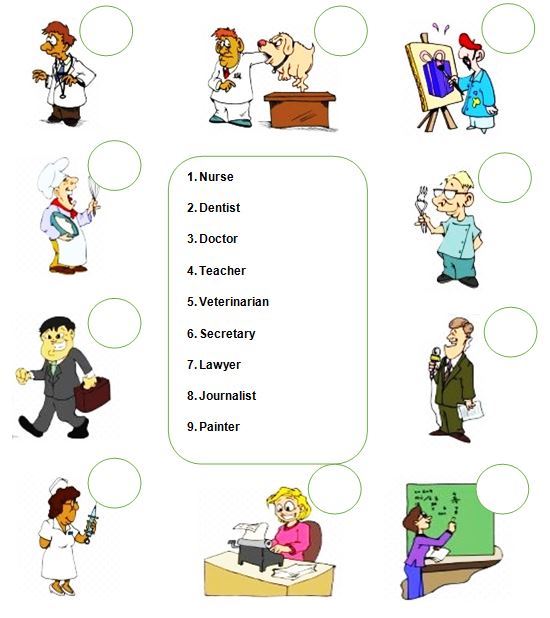
Conclusions
-
In
the observation guide, it was found that the teacher does not use
motivational activities to develop any speaking activities; therefore, the
students are not stimulated to interact.
-
In
the interview to the teacher, he agreed that a didactic guide with
motivational activities would support the development of the speaking skill
in class since he will be able to encourage their students to speak.
-
In
the survey, the students agreed that it is very important that the teacher
bring motivational activities to turn the class more dynamic and
participative to work their oral expression. In addition, they reckon that
using these motivational activities will help them to develop this skill.
-
According
to the Chi square, Most of the students agreed that the most difficult skill
to develop is the oral expression. The teachers must take into account the
importance of performing motivational activities in speaking classes in
order to the students produce it.
Acknowledgements
The research project “Gestión de competencias para publicaciones científicas
en estudiantes de pregrado y postgrado de la Universidad de las Fuerzas Armadas,
ESPE”.
Bibliography
-
Ausubel,
D. P. (2000). The Acquisition and Retention od Knowledge: a Cognitive
View. Dordrect, Boston: Kluwer Academic Publishers.
-
Authorstream.
(2014). Speaking Skills. Recuperado el 20 de August de 2015, de
http://www.authorstream.com/Presentation/truptishinde01-1541033-speaking-skills/
-
Baker,
J., & Westrup, H. (2003). Essential Speaking Skills. London:
A&C Black. Retrieved from
https://books.google.com.ec/books?id=1ZHX_kgswP8C&dq=speaking+skill&hl=es&source=gbs_navlinks_s
-
Banks,
J. A., & Gee, C. A. (2009). Multicultural Education: Issues and
Perspectives. John Wiley & Sons.
-
Barroso,
G., Calero, S. y Sánchez, B. (2015). Evaluación Ex ante de proyectos:
Gestión integrada de organizaciones de Actividad Física y Deporte.
Quito, Ecuador. Editorial de la Universidad de las Fuerzas Armadas ESPE.
http://repositorio.espe.edu.ec/bitstream/21000/10166/3/Evaluci%C3%B3n%20exante%20de%20proyectos%20de%20gesti%C3%B3n.pdf
-
Barroso,
G., Sánchez, B. Calero, S., Recalde, A., Montero, R. y Delgado, M. (Mayo de
2015). Evaluación exante de proyectos para la gestión integrada de la
I+D+i. Experiencia en universidades del deporte de Cuba y Ecuador.
Recuperado el 15 de Febrero de 2016, de Lecturas: Educación Física y
Deportes, EFDeportes.com, Revista Digital. Buenos Aires, Año 20, Nº
204 http://www.efdeportes.com/efd204/evaluacion-de-proyectos-en-universidades-del-deporte.htm
-
Bélisle,
C. (2008). Learning and Intercultural Dimensions of Learning Theories and
Teaching Models. Retrieved August wednesday, 2015, from
http://hal.archives-ouvertes.fr/halshs-00264330
-
Brawer,
M. P. (1982, April 9). Integrating Motivational Activities into
Instruction: A Developmental Model., ED222106. Retrieved July 05, 2015,
from Institute of Education Science (ERIC): http://eric.ed.gov/?id=ED222106
-
Brookfield,
S. D. (1987). Developing Critical Thinkers: Challenging Adults to Explore
Alternative Ways of Thinking and Acting. San Francisco: Josscy-Bass.
-
Byram,
M., Gribkova, B., & Starkey, H. (2002). Developing the Intercultural
Dimension in Language Teaching. Council of Europe, Strasbourg. Retrieved
August wednesday, 2015
-
Cárdenas,
Y.A., Zamora, X.A., y Calero, S. (2016). Incidence of the practice of
taekwondo in the academic performance of 6-16 year old students.
Lecturas: Educación Física y Deportes. Buenos Aires, Año 21, Nº 215,
Consultado: 28 de Mayo de 2016. http://www.efdeportes.com/efd215/practice-of-taekwondo-in-the-academic-performance.htm
-
Carvalho,
S. (23 de June de 2002). Motivating Speaking Activities. Recuperado
el 10 de August de 2015, de TeachingEnglish | British Council | BBC:
https://www.teachingenglish.org.uk/print/588
-
Constitución
Política de la República del Ecuador.
(2008). Montecristi. Obtenido de
http://www.asambleanacional.gov.ec/documentos/constitucion_de_bolsillo.pdf
-
Farrel,
T. (2005). Succeeding with English Language Learners: A Guide for
Beginning Teachers. United States of America: Corwin Press. Retrieved
from
https://books.google.com.ec/books?id=2mYYxqAu97MC&dq=accuracy+and+fluency+in+speaking+skill&hl=es&source=gbs_navlinks_s
-
Grant,
C. A., & Sleeter, C. E. (2011). Doing Multicultural Education for
Achievement and Equality. Routledge.
-
Kurfiss,
J. G. (1988). Critical Thinking: Theory, Research, Practice, and
Possibilities. ASHE-ERIC Higher Education Report No. 2.
-
McLeod,
S. A. (2012). Zone Proximal Development. Retrieved August 15, 2015,
from Simply Psychology:
http://www.simplypsychology.org/Zone-of-Proximal-Development.html
-
Merriam-Webster,
Incorporated. (2015). Merriam-Webster's Collegiate Dictionary.
Recuperado el 21 de August de 2015, de Merriam-Webster Dictionaries:
http://www.merriam-webster.com/
-
National
Plan for Good Living. (2013).
Obtenido de
http://www.planificacion.gob.ec/wp-content/uploads/downloads/2013/12/Buen-Vivir-ingles-web-final-completo.pdf
-
Powers,
D. E., & Enright, M. K. (1987). Analytical Reasoning Skills in
Graduate Study: Perceptions of Faculty in Six Fields. Journal of Higher
Education 58(6): 658-82.
-
Qiyan,
W., Ping, W., Liming, W., Xiaodan, H., Xiaodan, H., Hui, D.,... Libo, Z.
(2005). Principles for teaching speaking. Retrieved from Foundations
for Classroom Teaching:
http://media.open.com.cn/media_file/rm/dongshi2005/yingyujiaoxuefa/part3/unit-08-3.asp#
-
Raţă,
G. (2011). Academic Days of Timişoara: Language Education Today.
Cambridge Scholars Publishing. Retrieved from
https://books.google.com.ec/books?id=jBorBwAAQBAJ&dq=Partially+interactive+speaking&hl=es&source=gbs_navlinks_s
-
Reglamento
General a la Ley Orgánica de Educación Intercultual.
(2012). Quito: Decreto No. 1241.
-
Rehman,
A., & Haider, K. (2013, October). The Impact of Motivation on Learning
of Secondary School Students in Karachi: An Analytical Study. Education
Reaserch International, 2(2), pp. 139-147. Retrieved August 4, 2015,
from http://www.erint.savap.org.pk/PDF/Vol.2(2)/ERInt.2013(2.2-17).pdf
-
Richards,
J. C., & Renandya, W. A. (Edits.). (2002). Methodology in Language
Teaching: An Anthology of Current Practice. New York, New York, United
States of America: Cambridge University Press.
-
Sasson,
D. (2013). Speaking and Writing for English Language Learners:
Collaborative Teaching for Greater Success with K-6. United States of
America: R&L Education. Retrieved from
https://books.google.com.ec/books?id=Wd9OAQAAQBAJ&dq=accuracy+and+fluency+i
-
Sleeter,
C. E. (2005). Un-standardizing Curriculum: Multicultural Teaching in the
Standards-Based Classroom. Teachers College Press.
-
Smith,
B. L., & MacGregor. (1992). Collaborative Learning: A Sourcebook for
Higher Education. University Park, PA: National Center on Postsecondary
Teaching, Learning and Assessment (NCTLA).
-
Tomar,
B. (2014, March). Axiology in Teacher Education: Implementation and
Challenges. IOSR Journal of Research & Method in Education
(IOSR-JRME), 4, pp. 51-54. Retrieved August 15, 2015, from
http://www.iosrjournals.org/iosr-jrme/papers/Vol-4%20Issue-2/Version-3/H04235154.pdf
-
University
of Pittsburgh. (2008, August 08). Six Types of Oral Communication
Activities. Retrieved August 21, 2015, from Speaking in the Disciplines:
http://www.speaking.pitt.edu/about/oral-comm.html
-
Vygotsky,
L. (1962). Thought and Language. Cambridge: MIT Press.
-
Vygotsky,
L. (1978). Mind in Society. London: Harvard University Press.
-
Wood,
D., Bruner, J., & Ross, G. (1976). The Role of Tutoring in Problem
Solving. Journal of Child Psychology and Child Psychiatry, p. 89−100.
Retrieved August 15, 2015.
-
Woolfolk,
A. E., Hughes, M., & Walk, V. (2012). Psychology in Education
(12th ed.). Pearson Logman Publishing.
Another articles in English

|
|
|
EFDeportes.com, Revista Digital · Año 21 · N° 219 | Buenos Aires,
Agosto de 2016
Lecturas: Educación Física y Deportes - ISSN 1514-3465 - © 1997-2016 Derechos reservados
|













